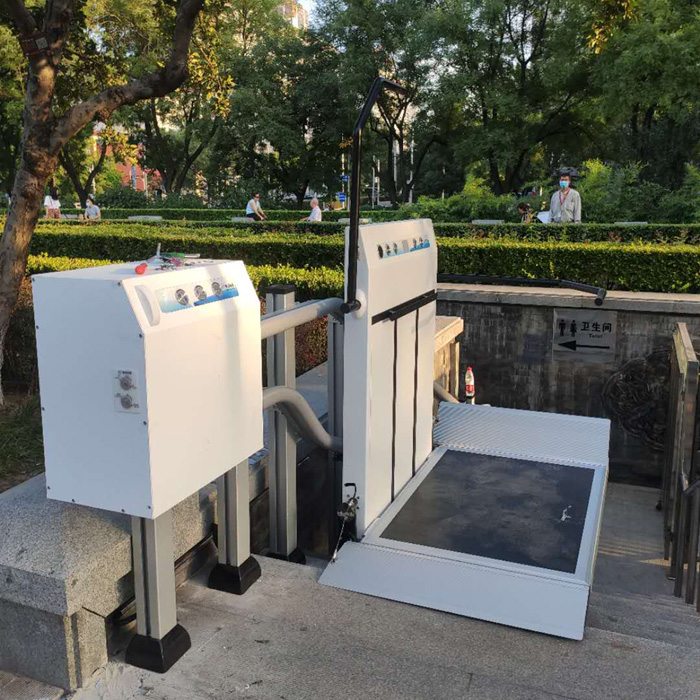
Vertical platform lifts are often considered the ideal solution for accessibility challenges in buildings. These lifts provide a convenient and efficient way for individuals with mobility limitations to access different levels of a building.
One of the main benefits of vertical platform lifts is their versatility and adaptability. These lifts can be installed both indoors and outdoors, making them suitable for a wide range of environments. They can be customized to fit into existing spaces, eliminating the need for major modifications to the building structure.
Vertical platform lifts also offer a high level of safety and stability. They are designed to meet strict safety standards and come equipped with features such as non-slip platforms, safety gates, and emergency stop buttons. This ensures that individuals using the lifts can do so with confidence and peace of mind.
Another advantage of vertical platform lifts is their ease of use. They are user-friendly and can be operated by individuals with limited strength or mobility. The controls are typically straightforward, allowing users to operate the lift independently. This promotes greater independence and autonomy for individuals with disabilities.
Vertical platform lifts are also highly customizable to accommodate different needs. They can be equipped with various options such as folding platforms, extended handrails, and adjustable controls. This flexibility allows the lifts to cater to the specific requirements of different users, ensuring maximum comfort and safety.
In terms of cost-effectiveness, vertical platform lifts are often a more affordable solution compared to other accessibility options such as elevators or ramps. The installation and maintenance costs are relatively lower, making them a viable choice for both residential and commercial buildings. Additionally, vertical platform lifts have a smaller footprint compared to ramps, making them more space-efficient.
Moreover, vertical platform lifts are environmentally friendly. They consume less energy compared to elevators and are powered by electric motors. This reduces the carbon footprint of buildings and contributes to a greener and more sustainable environment.
Vertical platform lifts also offer a significant advantage over wheelchair lifts in terms of space requirements. Wheelchair lifts require larger spaces as they need to accommodate the entire wheelchair while in use. In contrast, vertical platform lifts only require minimum floor space, making them suitable for buildings with limited space.
Furthermore, vertical platform lifts can be installed quickly and easily. They are typically modular in design, meaning that they can be assembled and installed within a short timeframe. This is especially beneficial for buildings undergoing renovations or modifications to meet accessibility requirements.
However, it is important to note that vertical platform lifts may not be suitable for every situation. Certain buildings may have limitations in terms of available space or structural constraints that prevent the installation of vertical lifts. In such cases, alternative solutions such as inclined platform lifts or elevators may be more suitable.
Vertical platform lifts offer numerous advantages as a solution for accessibility challenges. They provide a safe and efficient means of vertical transportation for individuals with mobility limitations, promoting inclusivity and accessibility in buildings. With their versatility, ease of use, and cost-effectiveness, vertical platform lifts can indeed be considered the ideal solution for many accessibility challenges.
